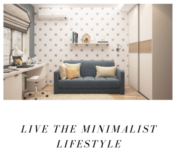Table of Contents
Warm Minimalism: Embracing Cozy Simplicity in Design
Warm minimalism is a design approach that combines the simplicity of minimalism with cozy, inviting elements. It focuses on using warm colors, natural materials, and personal touches to create spaces that feel both uncluttered and welcoming. This style allows you to maintain a clean aesthetic while making your home feel lived in and comfortable.
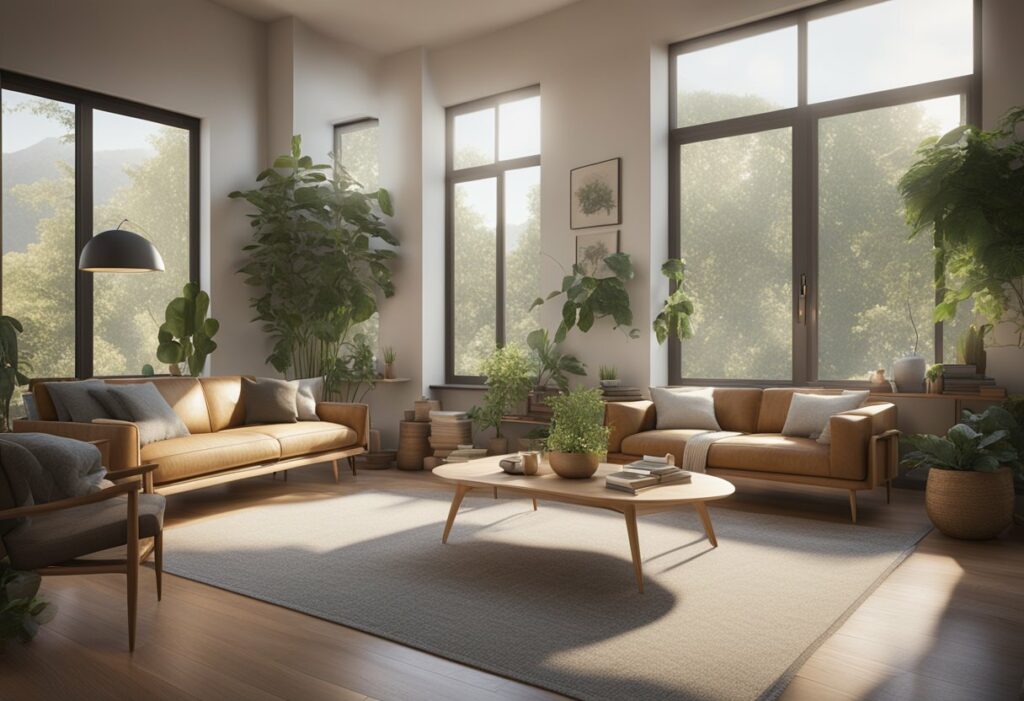
Incorporating warm minimalism into your space can significantly impact how you feel in your environment. By choosing earthy tones and soft textures, you can create a sanctuary that promotes relaxation. It’s not just about looking great; it’s about making your home a place where you truly feel at ease.
Whether you’re redesigning an entire room or just looking for small changes, warm minimalism offers a fresh perspective. Embracing this style can transform your living space into a haven that reflects your personality while keeping things simple and stylish.
Key Takeaways
- Warm minimalism blends simplicity with comfort for inviting spaces.
- Natural materials and warm tones enhance your home’s coziness.
- Creating balance in design can improve your overall well-being.
Concept of Warm Minimalism
Warm Minimalism blends simplicity with comfort, creating inviting spaces that still feel uncluttered. It emphasizes natural materials and earthy colors, making homes cozy yet stylish.
Defining Warm Minimalism
Warm Minimalism is a design style that combines the principles of minimalism with elements that add warmth and comfort. Instead of empty spaces with harsh lines, this approach includes natural textures like wood and soft fabrics.
You typically see warm colors like beige, soft greens, and browns used in this style. These colors create a welcoming atmosphere. The idea is to have just enough decor to express personality without overwhelming the space.
This style is great for those who appreciate simplicity but also want their home to feel lived-in and inviting.
History and Evolution
Although the concept of Warm Minimalism is relatively recent, minimalism itself has been around for decades. It emerged as a reaction against excess in design, focusing on clean lines and functional spaces.
In the late 2010s and early 2020s, designers began to seek a more inviting version of this stark aesthetic. This led to the rise of Warm Minimalism, which incorporates soft textures and earthy tones.
You may notice this trend in popular interiors, with a focus on comfort. This evolution shows that homes can be both elegant and snug, merging aesthetics with emotional comfort.
Principles of Warm Minimalism
Key principles of Warm Minimalism revolve around creating balance in your space. Here are some important elements:
- Natural Materials: Use wood, stone, and textiles to add texture.
- Earthy Colors: Opt for muted shades that promote calmness.
- Thoughtful Decor: Choose a few meaningful items rather than clutter.
The aim is to create an atmosphere that feels complete yet simple. By focusing on these principles, you can achieve a space that feels cozy and modern without sacrificing minimalism.
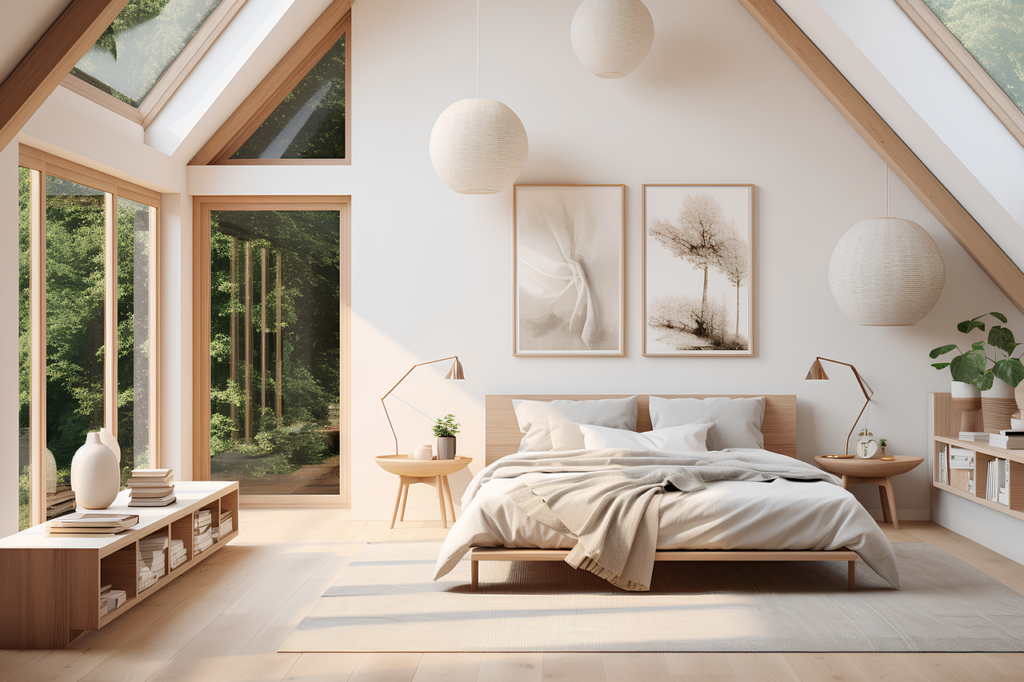
Design Elements
Warm minimalism focuses on creating a cozy and inviting space. Key design elements include color palettes, textures, and furniture choices that work together to promote a soothing atmosphere.
Color Palettes
When choosing colors for warm minimalism, go for soft and muted tones. Think warm neutrals like beige, taupe, and soft greens. These shades create a calming effect and add warmth to the space.
Avoid stark whites and cool grays, as they can feel unwelcoming. Instead, use colors that evoke nature and tranquility. Accent walls in warm earth tones can help create depth while keeping the overall look soft and inviting.
Textures and Materials
Incorporating various textures is essential to warm minimalism. You want to layer materials to create visual interest without clutter.
Mix natural elements like wood, stone, and metal. Soft textiles like cotton, linen, and wool can make your space feel inviting. Consider using a plush rug or cozy throw pillows to add comfort.
Stay away from plastic and synthetic materials, as they detract from the warm aesthetic. When you use a variety of textures, it helps balance simplicity with coziness.
Furniture and Decor
Selecting the right furniture is crucial for achieving a warm minimalist vibe. Opt for pieces that are simple yet functional.
Choose furniture with clean lines and a natural finish. For example, a light wood dining table can be a great centerpiece.
Accessorize with decorative items that reflect your personality but keep it minimal. A few well-placed plants or a piece of art can add character without overwhelming the space. Remember, each piece should feel intentional and harmonious with the overall design.
Creating Warmth in Minimal Spaces
To create warmth in minimalist spaces, focus on three key areas: lighting, textiles, and natural elements. These aspects add comfort and personality to your space while keeping it uncluttered.
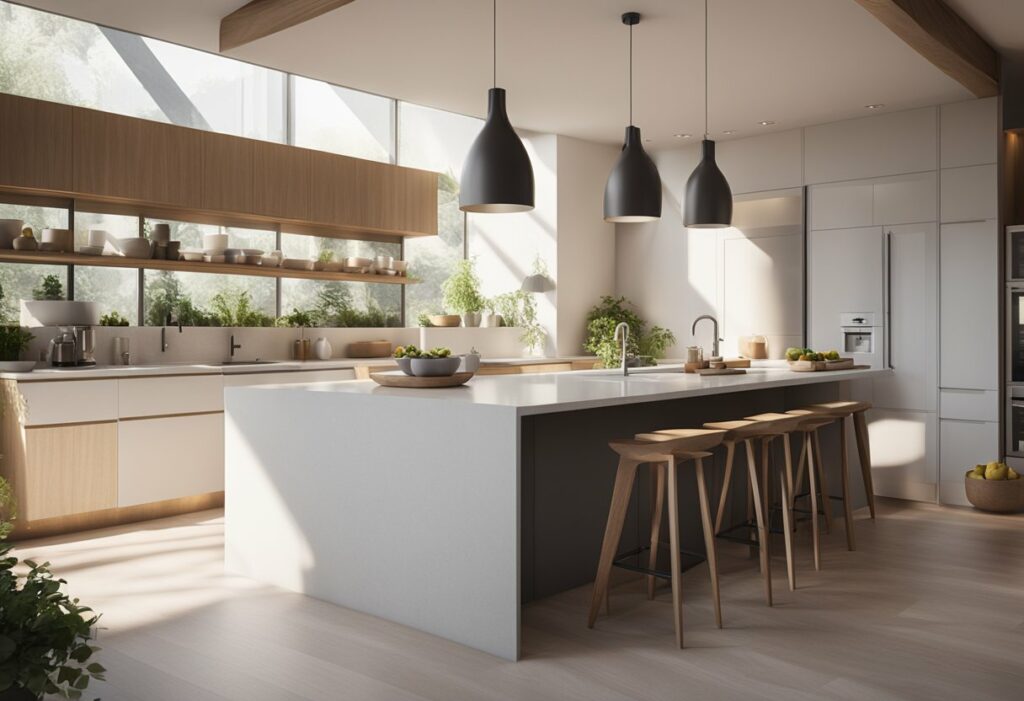
Lighting Techniques
Good lighting can transform a minimal space into a warm and inviting area. Use a mix of light sources to create depth. Consider using soft, warm bulbs rather than harsh white lights.
Table lamps, floor lamps, and wall sconces can offer softer lighting that adds a cozy feel.
Also, think about dimmer switches. They allow you to adjust the brightness based on your mood or time of day.
Natural light is also essential. Keep window treatments light and airy, like sheer curtains, to let in as much sunlight as possible. This invites warmth into the room.
Textiles and Soft Furnishings
Textiles are a simple way to inject warmth into your space. Rugs, cushions, and throws add layers and softness. Opt for plush materials like wool, cotton, or linen.
Area rugs can define spaces in open layouts and keep things cozy. Choose a large rug that covers most of the floor space for the greatest impact.
Adding throw pillows and blankets to couches or chairs enhances comfort and adds color.
The key is to promote a balance—keep your selections minimal but inviting.
Avoid overly busy patterns since they can clutter the simplicity you aim for in minimalism.
Incorporating Natural Elements
Bringing the outdoors in is a fantastic way to add warmth. Use natural materials like wood, stone, and plants to enhance your space.
For instance, wood furniture or accents can introduce both warmth and texture.
Consider including potted plants or fresh flowers. These add life and color without overwhelming the minimalist vibe.
Even small touches like wooden bowls or stone coasters can make a difference.
The idea is to use materials that are not only beautiful but also create a calm, inviting environment.
Functional Spaces
Creating functional spaces is all about making your living area practical and comfortable. You’ll find that good spatial planning
Psychology of Minimalism
Minimalism isn’t just about having fewer things; it can change how you think and feel. By focusing on what truly matters, you can boost your happiness and create a more peaceful mindset. Let’s explore how minimalism impacts well-being, fosters mindfulness, and helps declutter your mind.
Impact on Well-being
The way you live affects your emotional health. Research shows that embracing minimalism can lead to increased happiness and life satisfaction. By removing excess clutter from your space, you also remove distractions from your life.
Less clutter often means less stress. You may find it easier to focus on personal growth and genuine relationships. This lifestyle encourages you to prioritize experiences over material possessions, which can build a deeper sense of fulfillment.
Minimalism and Mindfulness
Minimalism supports mindfulness in practical ways. When you declutter your physical space, you make room for mental clarity. This clear space can help you feel more grounded and present in each moment.
Practicing minimalism encourages you to be intentional with your choices. You learn to appreciate what you have, leading to a greater sense of gratitude. This shift in mindset also helps reduce anxiety by allowing you to focus on the here and now, rather than being overwhelmed by what you don’t have.
Decluttering the Mind
Mind clutter can be just as overwhelming as physical clutter. Minimalism helps you simplify not only your environment but also your thoughts. By focusing on essential tasks and responsibilities, you can reduce mental overload.
You can practice mental decluttering by journaling or setting aside regular time for reflection. This allows you to clear your mind and prioritize what matters most. When your mind is decluttered, you create space for creativity and better decision-making, enhancing your overall quality of life.
Warm Minimalism in Art and Culture
Warm minimalism isn’t just about interior design; it extends into art and culture too. This style gives a cozy vibe that attracts many creatives.
You can see warm minimalism in paintings that use soft, earthy tones. Artists often choose materials like wood and clay, reflecting warmth and simplicity. These choices make their work feel inviting.
In photography, this style emphasizes natural lighting and rustic settings. You’ll find images that capture the beauty of simple moments, like a quiet morning or a sunlit room.
Warm minimalism also influences fashion. Think of clothing made from natural fabrics like linen and cotton in muted colors. This approach prioritizes comfort and ease, making you feel relaxed in your outfit.
Additionally, it appears in literature. Writers use simple, clear language to convey deep feelings. The focus is on creating an atmosphere that feels both serene and relatable.
You might find warm minimalism in public spaces, too—like parks or cafes designed with natural elements. These places offer a break from the fast pace of life, letting you unwind.
This aesthetic centers on making you feel at home, whether it’s in a gallery, a book, or a cozy corner of a cafe. It’s all about embracing simplicity while creating a sense of belonging.
Sustainable Practices
Sustainable practices are all about making smart choices that benefit both you and the planet. By choosing eco-friendly materials, focusing on energy efficiency, and reducing waste, you can create a warm minimalist environment that reflects your values and contributes to a healthier Earth.
Eco-Friendly Materials
When selecting materials for your home, go for those that are sustainable. Think about using reclaimed wood, bamboo, or recycled metal. These options not only look great but also reduce the impact on the environment.
Choose fabrics made from organic cotton, hemp, or linen. They are better for your health and the planet.
Make sure the paints and finishes you use are free from harmful chemicals. Low-VOC (volatile organic compounds) paints can improve indoor air quality while being safe for you and your loved ones.
Energy Efficiency
Energy-efficient designs can significantly lower your utility bills while being kind to the Earth. Start by using LED lighting throughout your home. These bulbs consume less power and last much longer than traditional options.
Consider updating your appliances to ENERGY STAR-rated models. They use less energy, which is good for your wallet and the environment.
Also, think about adding insulation to your home. Proper insulation keeps it warm in winter and cool in summer, so you’ll rely less on heating and cooling systems.
Waste Reduction Strategies
Decluttering is a key part of warm minimalism. Start by donating items you no longer need, and encourage friends to do the same. This reduces waste and helps others.
Implement a recycling system at home. Have separate bins for paper, plastics, and glass. This makes recycling easy and encourages everyone in the household to participate.
Finally, shop smart by buying in bulk when possible. This reduces packaging waste and saves money. Look for local stores that offer bulk options to support your community and the environment.
Global Influences
When you think about warm minimalism, it’s clear that global styles play a big role in shaping this design trend. Various cultural influences bring unique elements that can enhance your space, making it feel cozy yet uncluttered. Here are some key examples.
Scandinavian Interiors
Scandinavian design is all about simplicity and functionality. You can bring this vibe into your home with light woods and soft neutral colors. Think about using furniture that has clean lines, which adds to the airy feel.
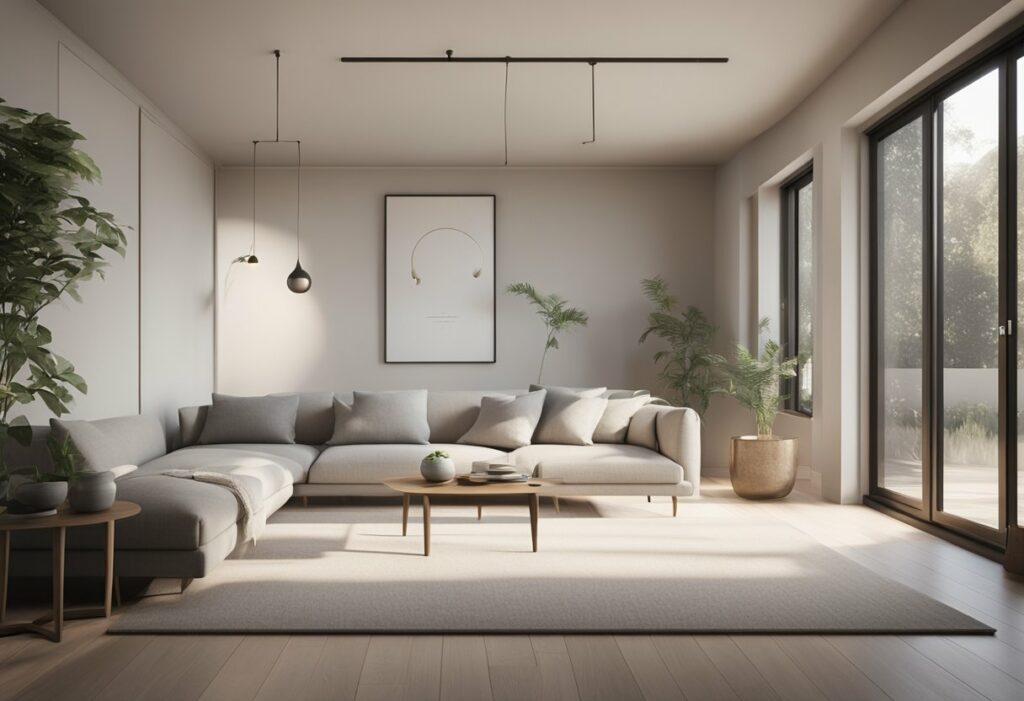
Accessories like plush textiles, such as wool throws and natural fiber rugs, are essential. They add warmth without overwhelming the space. You can also include small potted plants for a touch of nature, which complements the minimalist style beautifully.
Japanese Wabi-Sabi
Wabi-sabi is a Japanese philosophy that embraces imperfection and transience. This style invites you to appreciate the beauty in flaws. Incorporating wabi-sabi can be as simple as choosing handmade pottery or furniture with natural wear.
Neutral colors dominate, just like in Scandinavian design. You might also want to use organic materials like wood and stone. This creates a serene environment that encourages calm and mindfulness.
Other Cultural Perspectives
Many cultures offer unique takes on minimalism that can enrich your home. For instance, Mediterranean styles emphasize light and nature. You can use terracotta tiles and large windows to bring the outdoors in.
Asian influences often involve balance and harmony. Consider using elements like shoji screens or soft, flowing fabrics to add softness without clutter. Each culture brings a different perspective, so mix and match to find what feels right for you!
Case Studies
Exploring case studies in warm minimalism reveals how this design style can transform various spaces. You’ll see specific examples from residential projects, commercial spaces, and public installations that highlight its unique features and benefits.
Residential Projects
In residential design, warm minimalism creates cozy yet stylish homes. For example, a home in Kyoto uses soft, neutral tones and natural materials. You might notice wooden floors paired with simple furniture. This combination adds warmth while keeping everything clutter-free.
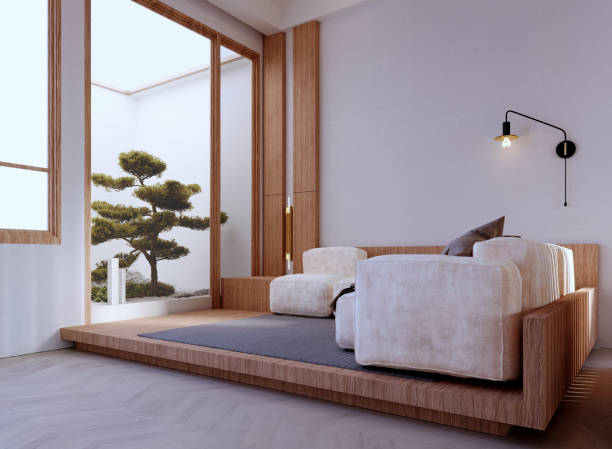
Key elements:
- Natural light: Large windows let in plenty of sun.
- Soft textures: Cushions and rugs add comfort.
- Functional design: Every piece serves a purpose.
These projects often focus on creating a serene environment where you feel relaxed and at home.
Commercial Spaces
Warm minimalism in commercial spaces aims to provide a welcoming atmosphere. Consider cafes designed with warm woods and inviting seating. You can enjoy your coffee surrounded by a soothing interior that encourages relaxation while maintaining a modern vibe.
Some important aspects include:
- Balanced lighting: Soft lighting enhances comfort.
- Open layouts: Promotes a feeling of spaciousness.
- Natural materials: Using wood and stone creates warmth.
These design choices help businesses attract customers and create memorable experiences.
Public Installations
Public installations embrace warm minimalism to create inviting community spaces. Think of parks or art installations that blend nature with modern design. For instance, a recent outdoor gathering area uses warm seating and greenery to invite people to sit and socialize.
Highlights of these spaces:
- Safety: Well-lit and open areas encourage use.
- Community focus: Spaces designed for gatherings.
- Natural integration: Incorporating plant life helps the environment feel cozy.
These approaches enhance public enjoyment and encourage community interaction.
Warm Minimalism Trends
Warm minimalism is a fresh take on design that combines simple elegance with cozy vibes. It focuses on creating inviting spaces without clutter. Here are some trends you can expect:
- Natural Materials: Think wood, stone, and soft textiles. These bring warmth and a touch of nature indoors.
- Neutral Color Palettes: Soft beiges, warm whites, and gentle earth tones are popular. They create a calm and serene atmosphere.
- Functional Furniture: Pieces that serve multiple purposes are key. You want stylish yet practical items that make the most of your space.
- Layered Textures: Combine different materials like wool, linen, and leather. This adds depth and interest to your decor without overwhelming it.
- Mindful Decor: Choose items that have meaning to you. This trend encourages you to curate your space with intention.
- Open Spaces: Emphasize spaciousness and light. Keep furniture arrangements open to maintain a breezy feel.
Warm minimalism is all about making your home feel inviting and easy to navigate. By focusing on these trends, you can create a space that feels both stylish and comfortable.
Do It Yourself
Creating a warm minimalist space can be fun and rewarding. With a few DIY projects and upcycling ideas, you can transform your home into a serene haven without spending a lot of money.
DIY Projects for Home Decor
One easy project is to create a cozy wall hanging. Use natural materials like twigs or branches along with soft fabrics in neutral tones. This not only adds texture but also keeps the space light.
Another popular idea is to make your own candle holders. You can use simple glass jars. Fill them with sand or pebbles, then add a candle on top. This brings warmth and a personal touch to any room.
Try painting furniture a soft, muted color. A fresh coat can transform pieces you already own. Look for shades like light beige or soft gray that enhance the overall calming effect you want.
Keep it simple. Add decorative bowls with natural elements, like stones or dried flowers. These accents embody the warm minimalism vibe.
Upcycling for Minimalism
Upcycling is a great way to embrace minimalism. Start by looking for items you already own but don’t use anymore. Think old wooden crates or vintage furniture.
You can turn crates into stylish shelving. Just sand and paint them for a fresh look. Hang them on walls to display plants or books without cluttering the floor.
Consider reupholstering old chairs with neutral fabric. This can modernize a piece while keeping it comfortable. Stick to soft hues to match a warm minimalist style.
Another idea is to repurpose glass bottles. They can be used as vases or candle holders. Simply remove the labels and clean them up for a chic, eco-friendly decoration.
With these projects, you can make your home a reflection of your style while being kind to the planet.
Frequently Asked Questions
You might have some questions about how to make your space feel warm and inviting while keeping it minimal. Here are some specific tips and differences that can really help you embrace warm minimalism in your home.
How can I incorporate warm tones into a minimalist living room?
To add warm tones in your living room, start with a neutral base, like cream or soft beige for the walls. Then, layer in warm accents through throw pillows, blankets, or art pieces that feature earthy colors like terracotta or muted yellows.
What are the key elements of designing a warm minimalist bedroom?
Focus on soft textures and natural materials, such as a wooden bed frame or cotton bedding. Keep furniture simple and functional, using warm lighting to create a cozy atmosphere. Plants can also add life and warmth without clutter.
In what ways does ‘warm minimalism’ differ from traditional minimalism?
Traditional minimalism often leans toward stark, cold spaces with very few items. Warm minimalism, on the other hand, focuses on comfort, using warmer colors and textures to make a space more inviting while still being simple and clutter-free.
What colors are typically used in a warm minimalist color palette?
Warm minimalism usually features a palette of neutral colors like beige, taupe, and soft whites. Additionally, shades like warm grey, earthy greens, and gentle terracotta can help create that cozy vibe you’re looking for.
How can warm minimalism be distinguished from Japandi style?
While both styles emphasize simplicity, warm minimalism embraces a cozy feel and more inviting tones. Japandi mixes Japanese and Scandinavian influences, focusing on functionality and natural materials, but may be a bit less warm overall.
What are some tips for achieving a warm minimalist design in a kitchen?
In the kitchen, opt for wooden cabinets or open shelving to display a few carefully chosen items. Use warm lighting to set a welcoming mood, and keep countertops clear of clutter. Adding plants or simple decor can enhance the warmth without overwhelming the space.
